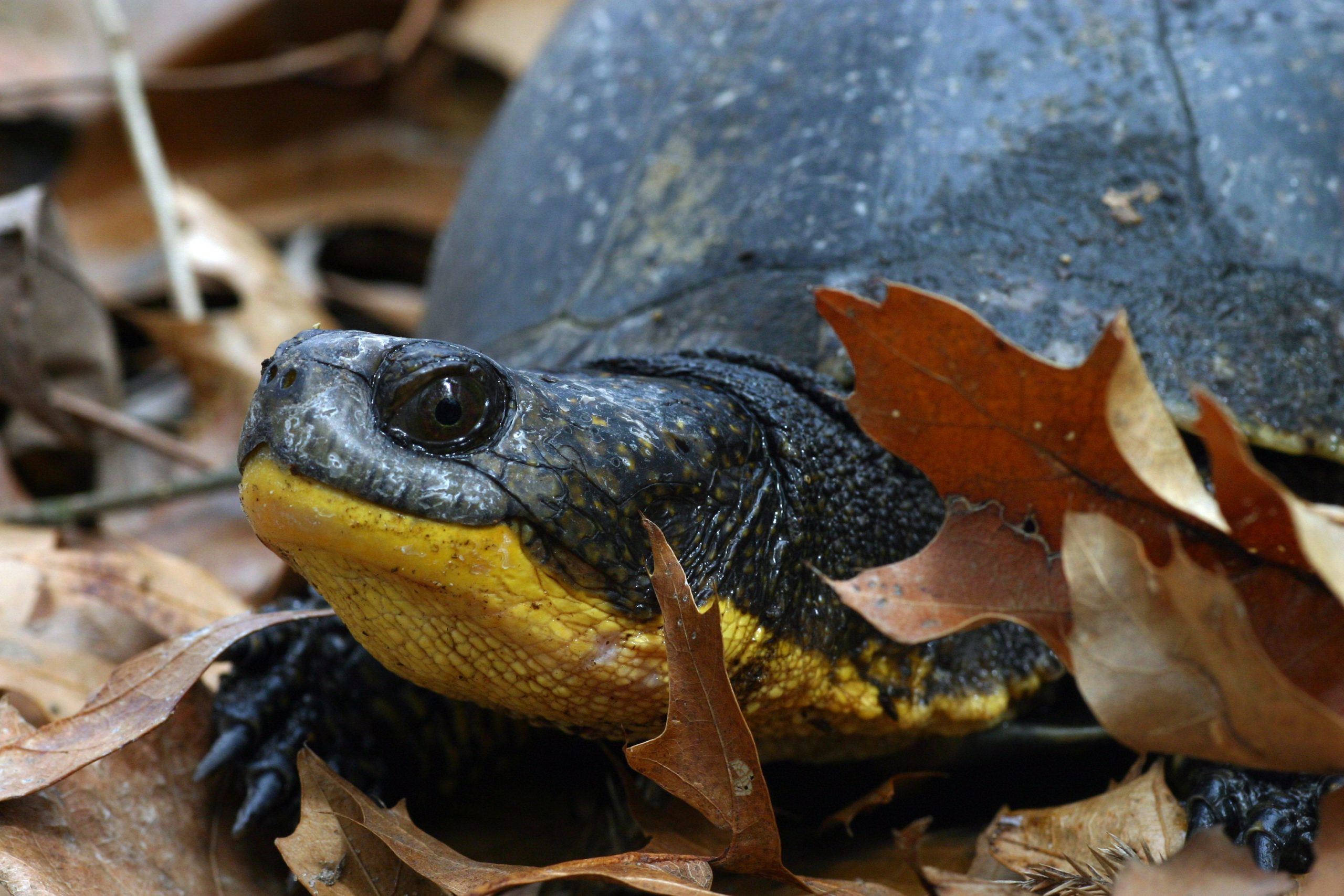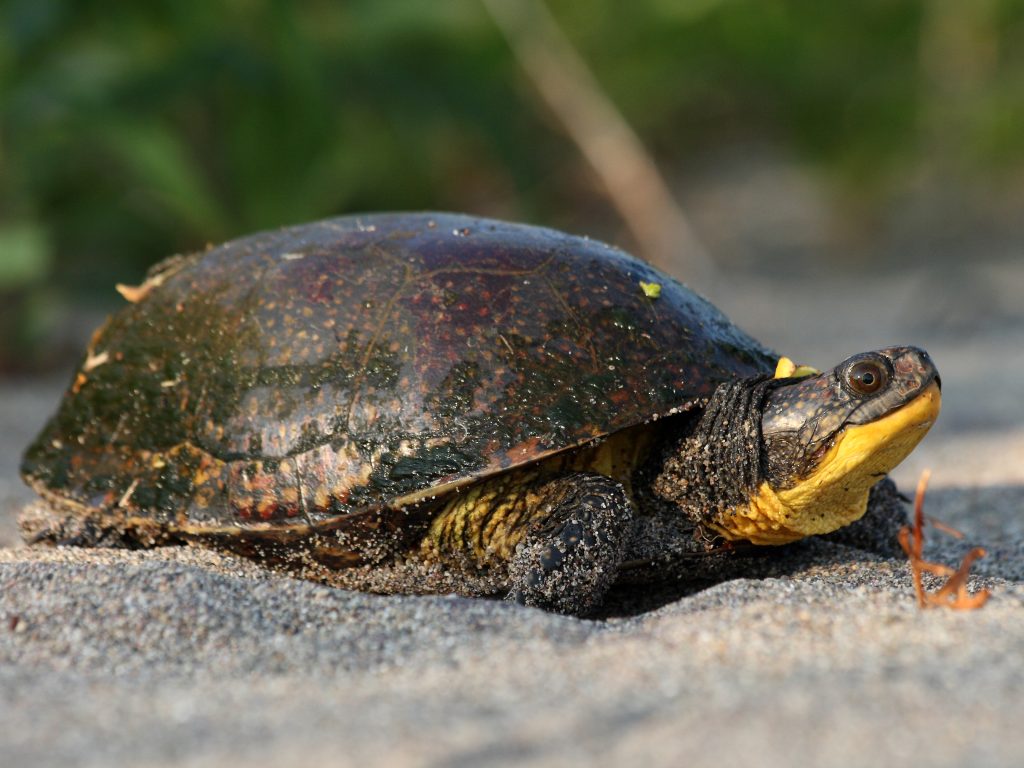Range
United States and Canada
Habitat
Shrubland, Grassland, Wetlands (inland) Blanding’s turtles are semi-aquatic and are found in shallow wetland habitats where aquatic vegetation is abundant including: ponds, marshes, swamps, bogs, wet prairies, river backwaters, lake shallows etc.
Behavior
This species of turtle will move to different habitats, sometimes traveling over ½ a mile from their winter wetland to upland nesting sites. Breeding usually takes place after hibernation although they are known to breed all year. Female’s are able to store sperm until early spring. While not usually aggressive, the males may show aggression toward females during mating.
Reproduction
Most turtles will not reach breeding age until they are at least 18 years old. They are able to breed throughout their whole life. This species is mostly polyandrous and females will breed with more than one male. As such, each clutch has eggs fathered by several different males. Courtship usually begins underwater but mating will occur on land close to water or in the water. Clutch sizes average 10 eggs per clutch Once the eggs are laid, the females leave. Incubation takes 80 – 126 days. Similar to other turtles, they exhibit temperature sex determination. Eggs exposed to lower temperatures will be males; those exposed to higher temperatures will be females. Females exhibit high nest site fidelity and will return to the same nesting site year after year.
Cool Facts
| -Adults can emit sounds under water while they swim. |
-Second most popular turtle species in the commercial trade.
-Has a hinged plastron, like a box turtle, allowing the shell to close to protect the head and front limbs from predators.





